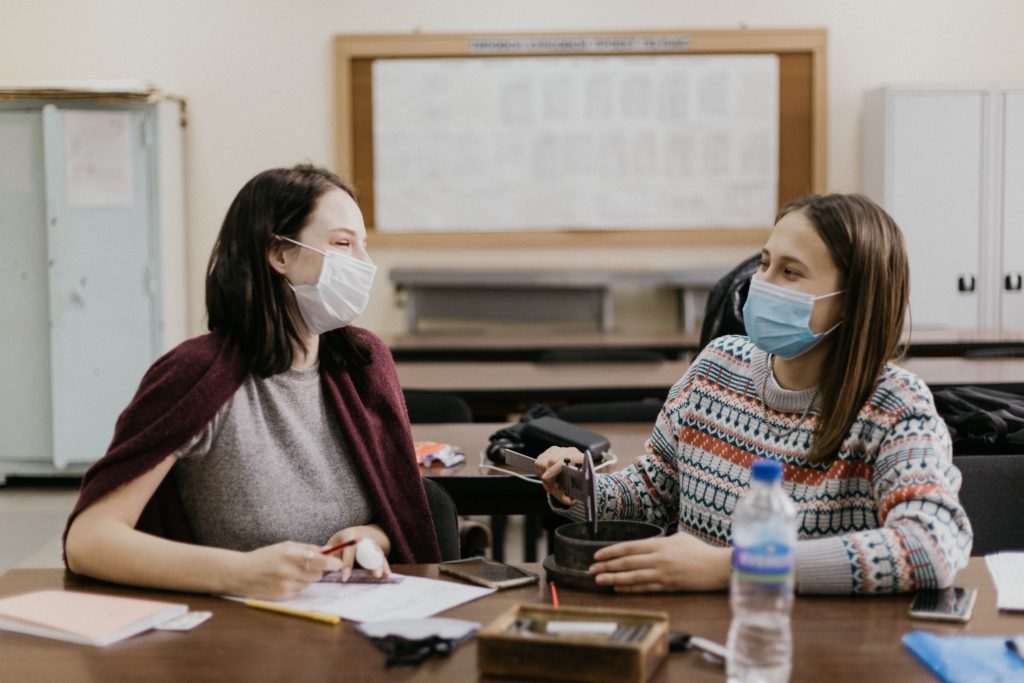Lawmakers delivered unprecedented resources to Maine people and communities this year as federal dollars and strong state tax revenues supported historic levels of investment in response to long-standing community needs exacerbated by the pandemic. This exceptional level of investment in Maine people and communities was made possible by federal action to stabilize the economy for workers and businesses and direct fiscal relief to state and local governments.
The 130th Legislature passed three budget bills appropriating state revenues and a $1 billion spending package that distributed the funds the state received from the American Rescue Plan Act since January. State lawmakers used these resources to reach key milestones in school and community funding, stabilize local property taxes, and respond to long-standing needs of Maine families and workers with additional investments in expanded tax credits for working families and improvements in Maine’s care economy — all of which are priorities advocated by the Maine Center for Economic Policy for years.
Ensuring these investments extend into the future is crucial to protecting Mainers in the face of ongoing economic challenges.
Milestone investments will improve public services and stabilize property taxes
For the first time, the legislature passed a budget that will fund the voter mandated 55 percent of public education costs for the next two years and fully finance revenue sharing for local communities in the second year. Over the next two years, the additional education funding to fill this gap will send an additional $180 million to local communities and add $108 million to local budgets from the increase in revenue sharing.
These milestone investments in communities end the trend of pushing costs onto local budgets and forcing municipal officials to cut services or increase property taxes when the state fails to uphold its commitment. Over the past 10 years, Maine has underfunded its public schools by $2.54 billion and pushed a $707 million shortfall onto communities by neglecting to support services such as road maintenance, parks, and water treatment.
Low-income tax credit expansions will help families struggling to make ends meet
Even before the pandemic, Mainers with low income were struggling to get by.1 With job losses concentrated in low wage industries, the pandemic made making ends meet even harder for many families.
Lawmakers approved spending to improve affordability for households with low income. Expansions of the Earned Income Tax Credit for 140,000 households and Property Tax Fairness Credit for around 25,000 households put cash into the pockets of people with low wages and households that struggle with housing or property tax costs.2
The Earned Income Tax Credit boosts incomes of individuals and families with low wages. The state’s expansion will increase the credit amount for tax year 2021, which most families will file in the spring of 2022. The state will match 20 percent of the federal credit for 2021, resulting in an additional $190 on average for filers.
The Property Tax Fairness Credit boosts incomes for individuals and families with high property tax or rental costs relative to their incomes. Like the Earned Income Tax Credit, the Property Tax Fairness Credit is refundable, meaning families with low income can often claim this credit as a cash refund. For tax year 2021, 24,000 households facing high rent or property tax costs will receive an average benefit of $140; and for tax years 2022 and later, 28,000 households will receive an average benefit of $170 because of the changes passed in the state budget.
Nearly doubled, grant for college students with low income improves college affordability
Too often, the cost of college remains a barrier to starting or finishing a degree — an important asset for Mainers to boost their lifetime earnings and economic wellbeing. This hurdle is particularly hard to overcome for Mainers whose lives are most likely to be transformed by a college education — people of color, individuals who are the first in a family to go to college, and people from families with low income. Today, one-fifth of Maine adults have some college education but do not have a degree.3
To help remove this obstacle, in the state budget, lawmakers increased the maximum Maine State Grant amount from $1,000 to $2,500 as recommended by legislators in the 2014 Report of the Commission to Study College Affordability and College Completion. All Mainers who file a Free Application for Federal Student Aid (FAFSA) form are automatically considered for the grant, and it is awarded to students based on financial need.
Inroads on investments in long-term care work and access to childcare
Investments in Maine’s care economy will increase compensation for people providing support and improve access to care for children and adults. Underinvestment in essential care services has left Maine’s direct care workforce underpaid, short-staffed, and unable to meet the needs of the most vulnerable residents. Each week, hundreds of people who are older or have a disability or mental illness linger on waitlists while thousands of hours of care go undelivered and family members step up to fill the gaps.
To address these pressing needs, lawmakers sent $80 million to nursing facilities, residential care programs, and adult family care homes to support better wages for care workers and enact policies that better protect against COVID-19 transmission by lowering occupancy rates. An additional $10 million was dedicated to immediate short-term bonus pay for direct support staff to stabilize this workforce before higher wages can take effect in coming years.
Federal funds will support a $5 million pilot program that offers grants to family caregivers doing substantial unpaid work for adult family members. This pilot will collect data on program efficacy and how the State can better meet the needs of family caregivers who do invaluable work helping their loved ones stay safe and tended to in their homes.
Lawmakers also put federal dollars toward investments in expanding access to child care. Before the pandemic, the average cost of childcare for an infant in Maine was $9,500 — an unaffordable sum for eight out of nine Maine families.4 The package passed by the legislature included $25 million to improve and expand child care centers and strengthen the early child care infrastructure in public schools across the state. This proposal, matched with the Mills Administration’s proposal to deploy $130 million in child care specific federal funds, will lower costs for parents with low income, increase wages for child care providers, improve the quality of care, and help expand access and affordability of child care for many years to come.
Our better future must improve the lives of all people
Overall, lawmakers focused substantial state and federal resources on reducing harm and making sustained investments that improve quality of life for all Mainers. Out of this session came boosted incomes, increased college affordability, enhanced funding for local schools and services, and improvements to Maine’s care economy — all critical investments made possible by federal spending that stabilizes the economy and state budgets. While COVID-19 intensified the need for these funds, many families struggled to meet basic needs before the pandemic and will continue to do so if we do not sustain these investments once federal funding expires.
In the years to come, it is critical for the Governor and Legislature to prioritize protecting and expanding funds to create more opportunity for Maine communities, families, and workers. Many challenges persist — including the lack of affordable housing, and affordable health care for immigrants with low income — and raising the necessary state revenues is key to our ability to fund the solutions.
Notes
[1] Before the pandemic, roughly 19% of Maine adults could not afford their monthly bills and 17% could not afford a $400 emergency, like a car repair or hospital bill. Another two in 10 Maine adults would have to take on debt or sell belongings to afford that same emergency. Maine’s rental housing market was already among the least affordable in the nation, as 60% of extremely low-income households pay more than 50% of their income for rent, leaving little income for all other needs. Lawlor, Joe. “Maine’s rental market among nation’s least affordable, report says.” Portland Press Herald. June 13, 2018. https://www.pressherald.com/2018/06/13/maines-rental-market-; Maine State Data Overview. National Low Income Housing Coalition. Accessed February 16, 2021. https://nlihc.org/housing-needs-by-state/maine
[2] MECEP analysis of data provided by the Institute on Taxation and Economic Policy
[3] US Census Bureau, American Community Survey, 2017 data. 19% of Mainers aged 25 and older had some college education but no degree.
[4] “The cost of child care in Maine,” Economic Policy Institute, last updated October 2020. https://www.epi.org/child-care-costs-in-the-united-states/#/ME




